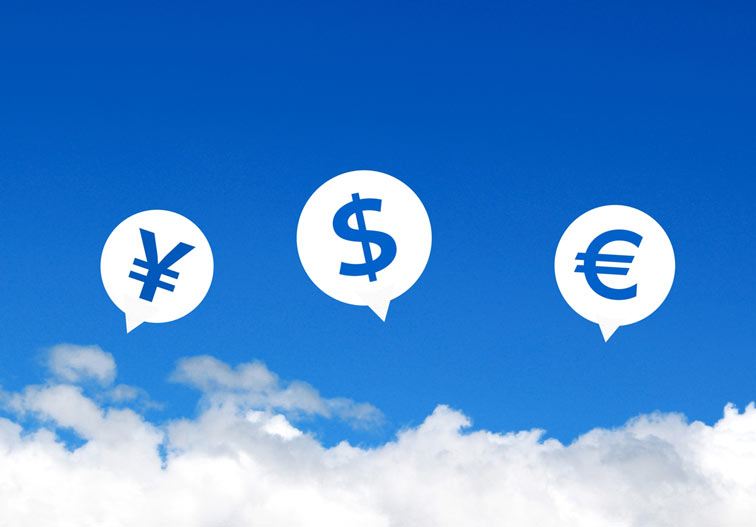How to Transfer Money To and From Japan

by Florian
Transferring money to and from Japan can cost high fees – but they’re avoidable. An introduction to international money transfer options for Japan and the blueprint that comes with it.
コンテンツ
Banks vs. money transfer service
If you have a bank account in Japan or your home country (or – most likely –both), you could, of course, turn to your bank for the transfer. However, if you do, be prepared for bad exchange rates and high fees. Banks can do this because they rely on the “laziness” on their customer’s part to look into alternative options.
One alternative option is using a money transfer service (sometimes also called “remittance service provider”). To be able to compete with the banks, they offer lower fees and better rates. In short, they simply save you money.
For most money transfer services, the basic system is the same:
1) Get a quotation. You go to the service’s website and put in the amount of money you want to send. You’ll see how high the fee is going to be and at what rate the money will be exchanged to the target country’s currency. In some cases, you’ll have to create a free account first.
2) Request a transfer. You enter your bank details and “lock in” the amount of money. Depending on the service, some ID verification may be necessary.
3) Send the money. You send the money to the transfer service from your bank account. The service will then handle the rest of the transaction for you.
Now while money transfer services are great, you shouldn’t trust them blindly. There are still things you should watch out for or at least consider before deciding on one. The two main points are fees and exchange rates.
Fees: Many transfer and remittance providers like to advertise their services as “free of any fees”. But in the end, these kinds of advertisements rely on semantics – they stretch the definition of the word “fee” to sell a product. Remember: These providers are businesses, so they have to make money somehow. Almost all of them do so through the exchange rate.
Exchange rates: A common practice is to say that the exchange rate is “based on” the mid-market (average) rate that can be looked up on sites like Bloomberg.com. However, banks and providers use that number as reference to set a “day rate”, using the difference between the two as a margin for themselves.
Let’s say you want to send 500USD to Japan. Checking the current exchange rate online, you see that you’re currently getting around 110 Yen for one Dollar – so you should be getting ¥55,000. However, the bank or transfer service may exchange at 108 Yen, their set rate for the day. In that case, you’d end up with only ¥54,000 in your account.
Depending on what transfer provider you choose, these more or less hidden fees may be higher or lower. Just be careful whenever you see a “no fees” advertisement and value transparency when making your decision.
Note that even with the best transfer service, you may not be able to get rid of bank fees completely. For example, the bank I’m using in my home country takes a 1,5% fee when higher sums of money are transferred to the account from outside the country. It still ends up being cheaper for me that way, but there’s no way to get the fee down to zero.
Money transfers from Japan
TransferWise
The main feature of TransferWise is that their exchange rates are very close (if not identical) to the mid-market rates you can find listed on sites like the above-linked Bloomberg or x-rates. Their transaction fees increase with the amount of money you want to send but are reasonable overall.
While this practice certainly scores them a lot of points in the transparency department, it doesn’t mean that you’ll always get the best deal with them. The transaction fee is key here. Depending on how stingy you want to be, it may still be worth looking at some other options.
GoRemit
GoRemit is a money transfer service handled by Shinsei Bank. Their transaction fees are always ¥2,000, no matter how much you send. Naturally, this makes them a bad choice if you regularly send smaller amounts. However, if you want to transfer a big amount of money at once, GoRemit may be cheaper than the other options.
One more thing: To use GoRemit, you need a customer number, which can only be received by mail (after creating an account). So, if you’re leaving Japan in two weeks and need a short-term option, you can scratch GoRemit from your list.
WorldRemit
Overall, this service is very similar to TransferWise. When comparing their services directly, the rates at WorldRemit were slightly worse, in exchange for a slightly lower transaction fee.
When transferring to Japan, WorldRemit fees start out at ¥150 for transfer up to ¥30,000 and then go up slowly in a tiered fashion, with the fee maxing out at ¥600 for amounts larger than ¥500,000.
Seven Bank
For their international money transfer, Seven Bank is teamed up with Western Union. Just like the Seven-Eleven stores, the main draw here is convenience – you can transfer at every one of their conbini ATMs. That, however, comes with a slight price increase.
Western Union
With Western Union, the maximum amount you can send in one transaction is relatively low at ¥100,000 (compared to the ¥1,000,000 that are possible with WorldRemit or TransferWise). However, at amounts below this level, their service is pretty competitive.
Comparison: From Japan
Example calculation when sending ¥30,000 from Japan using the services introduces above.
(Rates on October 11th, 2019)
| Service | Fee* | Rate | USD |
|---|---|---|---|
| Transfer Wise | ¥459 | ¥100 = $0.93 | $273.5 |
| Go Remit | ¥2,000 | ¥100 = $0.92 | $257.0 |
| World Remit | ¥200 | ¥100 = $0.91 | $271.78 |
| Seven Bank | ¥1,500 | ¥100 = $0.89 | $254.55 |
| Western Union | ¥390 | ¥100 = $0.92 | $273.2 |
*The fee was deducted in this example to accurately reflect how much money is received when the full amount is sent
Money transfers to Japan
TransferWise
TransferWise offers not only an out-of-Japan but also a to-Japan option. Overall, the same basic principles apply for both directions. Transfers that convert to over 1 million yen are paid out via SWIFT – in that case, you have to pay an extra fee . So be sure to consider that when you have your parents send you your part of grandfather’s inheritance.
OFX
The main draw of OFX is that you can send money without any fees to certain countries like the US or the UK. In other English-speaking countries like Canada or Australia, you’ll have to pay a flat fee of 15 dollars when transferring under 10,000 CAD or AUD.
There is also a minimum transfer limit, which changes depending on the country you reside in. For the UK, the minimum amount is £100, for the US, it’s $1,000. For Canada, Australia, and New Zealand, it’s 250 dollars. The website doesn’t provide accessible info on minimum transfer amounts or fees for the countries that cannot be chosen in the “language” menu on their website (i.e. don’t have separate FAQs).
In short, OFX may be a good choice if you reside in Australia, Canada, Hong Kong, New Zealand, Singapore or the US. However, if you’re from other countries, the website may lack some transparency.
Xoom/Paypal
Another option is to send the money via Xoom (a PayPal service). For transfers under $1,000, there’s a $9.99 flat fee. The same applies to the other dollar variants (AUD, CAD), British Pound and Euro. When compared to the other two providers introduced in this section, Xoom’s rates weren’t as competitive (at the time of writing), so I’d recommend to get a quotation before making your decision.
Comparison: To Japan
Example calculation when sending $1,000 from Japan using the services introduces above.
(Rates on October 11th, 2019)
| Service | Fee* | Rate | JPY |
|---|---|---|---|
| Transfer Wise | $11.41 | $1 = ¥108.3 | ¥107,099 |
| OFX | ¥0* | $1 = ¥107.8 | ¥107.849 |
| Xoom/ PayPal | $9.99 | $1 = ¥104.5 | ¥104.528 |
*Only for users residing in the US or UK.
How to find the right service
While I hope that this article was helpful, it is only an introduction to give you a quick overview. When researching for this article, I concluded that for myself, TransferWise would probably the best choice for transfers for both to and from Japan. However, for you, another service may be better!
So before sending any money, I’d recommend checking each service (or at least a few different ones) again to see what option is best for you. If you don’t want to go to each provider’s homepage separately, there are sites like monito that show you differences in pricing and fees at a glance. Anyhow, it’s your money, so by all means, be careful before deciding.
Recommended Posts

May Sickness: A Japanese Phenomenon
10 5月 2021 - Daily Life, Life


